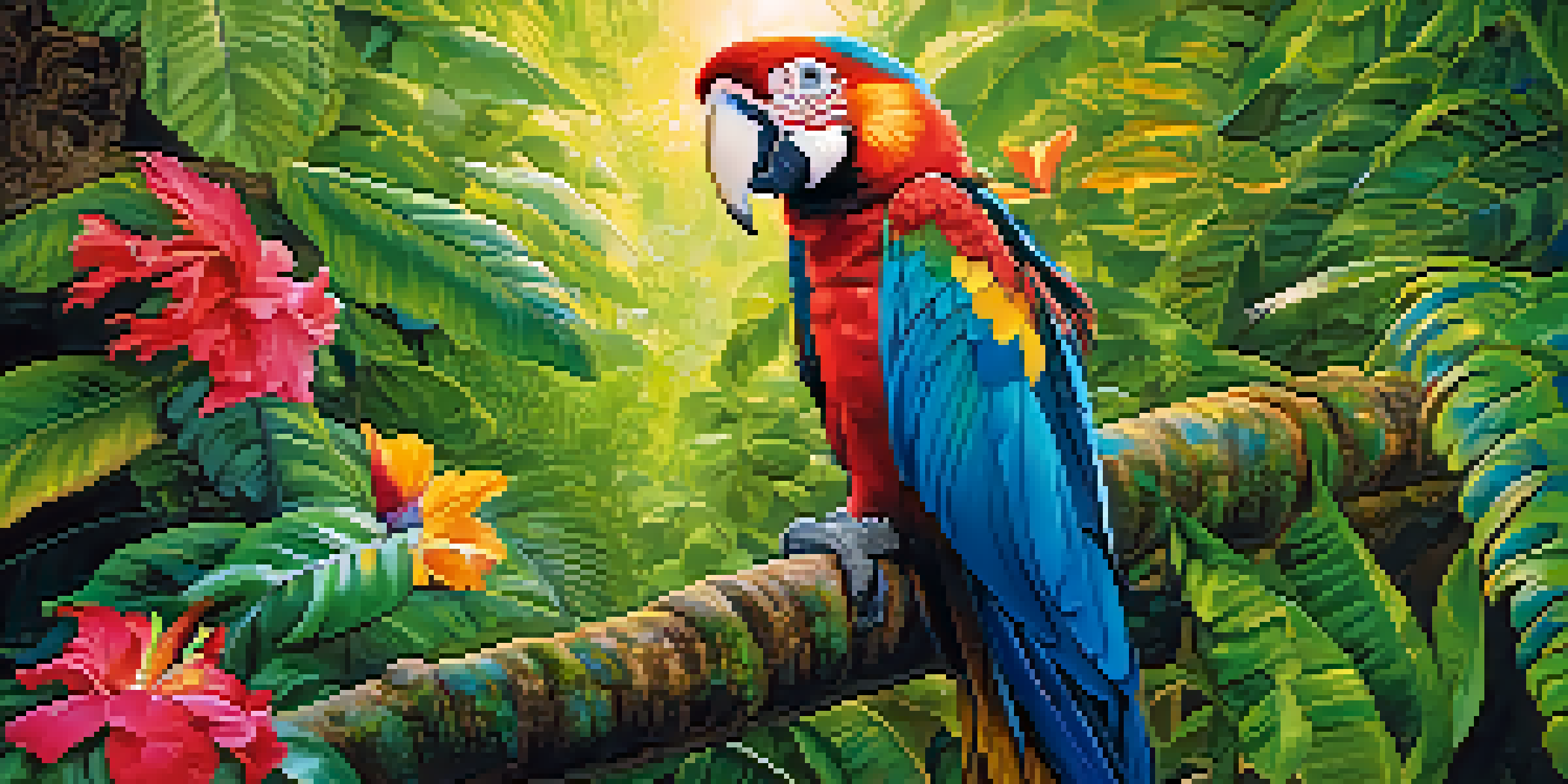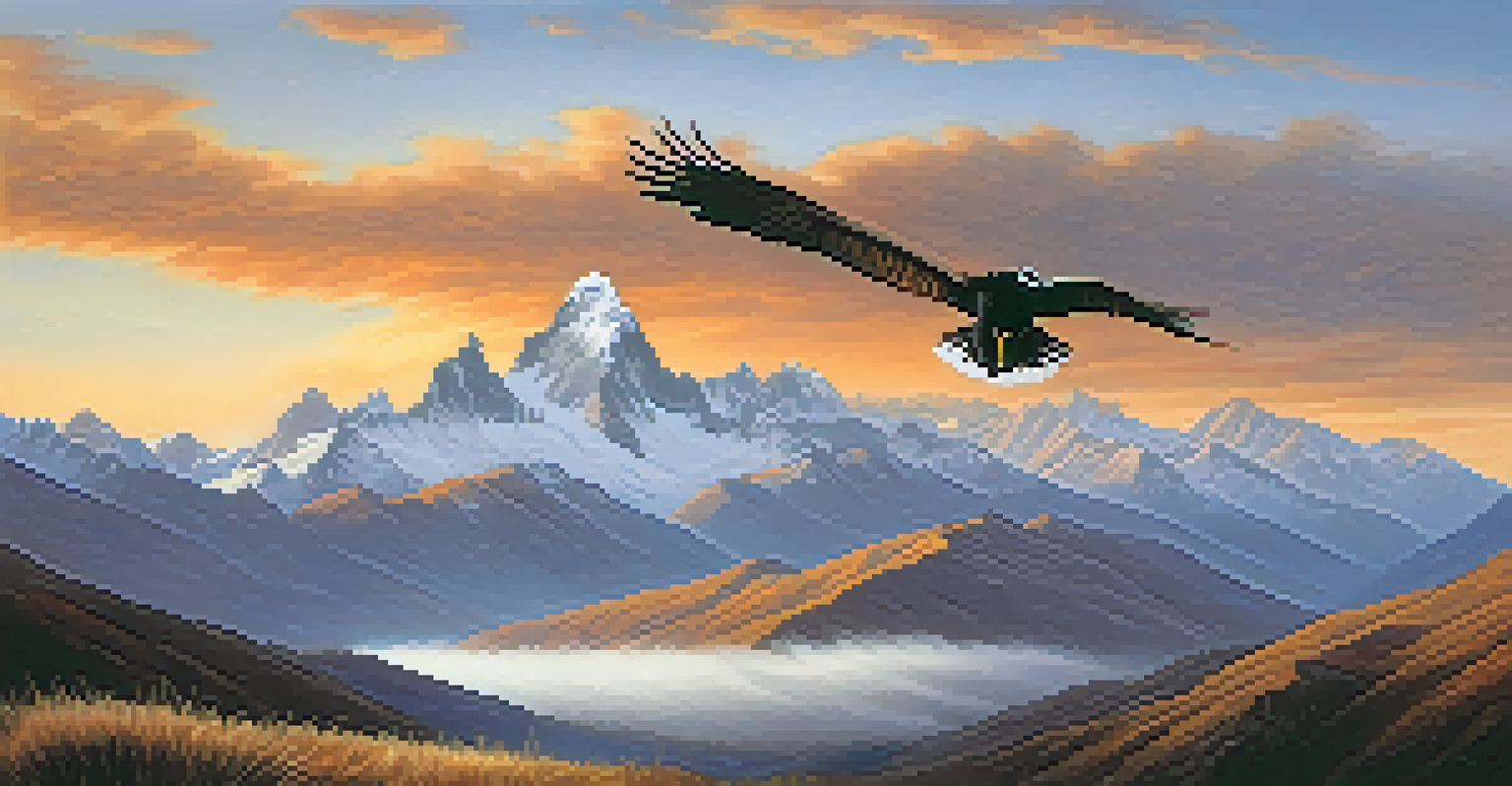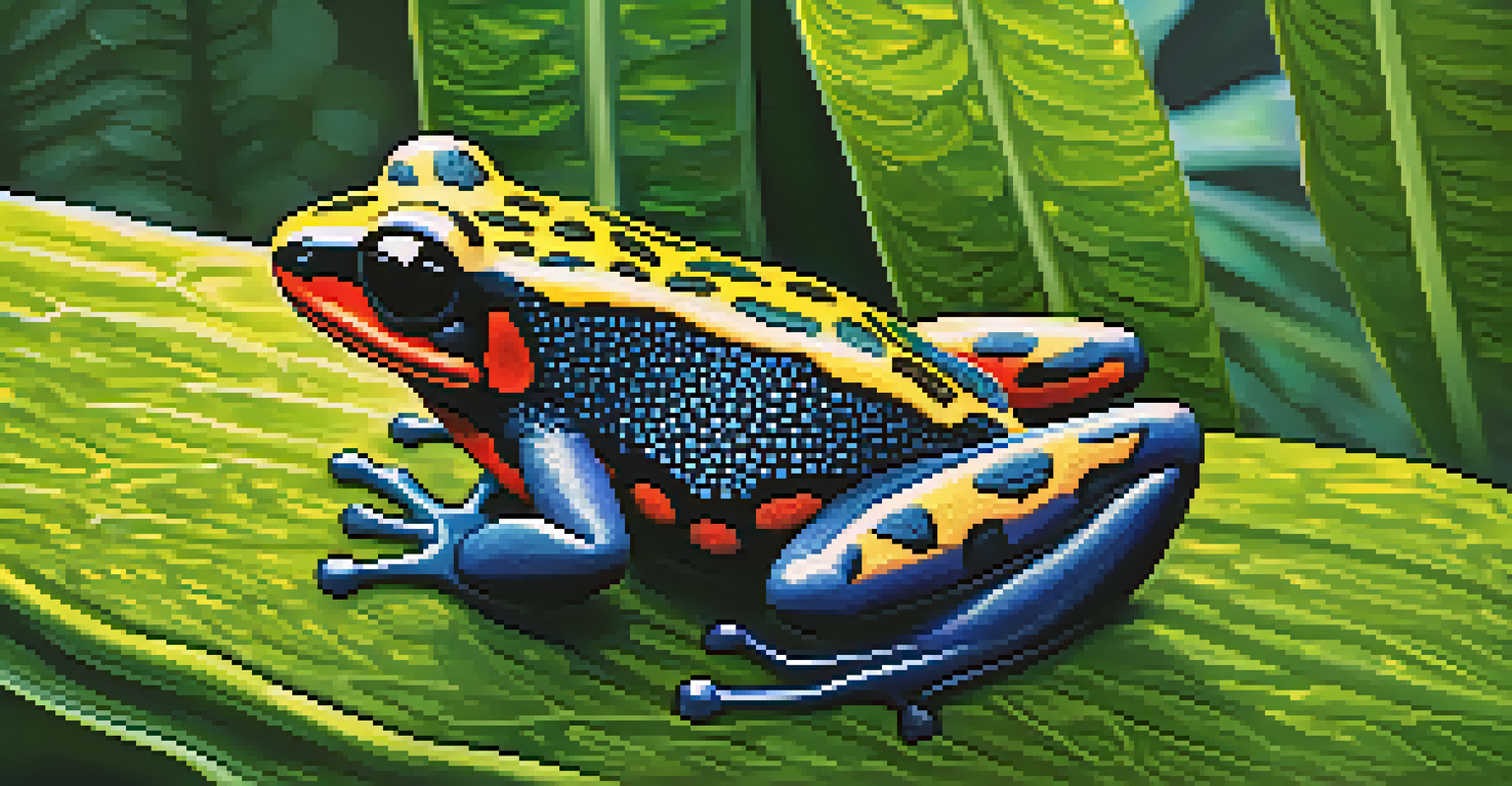Essential Gear for Capturing Peru's Diverse Wildlife

Understanding Peru's Unique Wildlife Ecosystems
Peru is home to a staggering variety of wildlife, ranging from the Amazon rainforest to the Andes mountains. Each ecosystem presents its own unique challenges and opportunities for wildlife photography. Understanding these environments will help you choose the right gear tailored to each setting.
In every walk with nature one receives far more than he seeks.
For instance, the dense Amazon requires different equipment than the open plains of the Pampas. In the rainforest, you might need a wide-angle lens to capture the vibrant flora and fauna, while in the mountains, a telephoto lens becomes essential for photographing elusive species at a distance.
Knowing the habitats and behavior of the wildlife you wish to capture is crucial. This insight will not only inform your gear choices but also enhance your chances of getting that perfect shot.
Choosing the Right Camera for Wildlife Photography
When it comes to wildlife photography, the camera you choose can make a significant difference. A DSLR or mirrorless camera with a high burst rate is ideal for capturing fast-moving animals. Look for models that perform well in low light, as many animals are more active during dawn and dusk.

Consider investing in weather-sealed cameras, especially if you're venturing into the Amazon's humid environment. These cameras can withstand the elements, allowing you to focus on your shots without worrying about damaging your gear.
Diverse Ecosystems Require Tailored Gear
Understanding Peru's varied wildlife habitats is essential for selecting the right photography equipment.
Don't forget about the importance of sensor size; a full-frame sensor will generally give you better image quality. However, crop sensors can be advantageous for wildlife photography, as they offer a greater effective focal length, letting you get closer to distant subjects.
Essential Lenses for Capturing Wildlife
Lenses are arguably the most vital aspect of wildlife photography gear. A versatile zoom lens, such as a 70-200mm, can adapt to various situations, whether you're shooting a close-up of a colorful bird or a distant mammal. This flexibility is crucial for capturing the diverse wildlife Peru has to offer.
The earth has music for those who listen.
For more distant subjects, consider a longer telephoto lens, like a 300mm or 600mm. These lenses allow you to photograph animals without disturbing them, which is often crucial for getting natural behavior shots.
Don't overlook the importance of a good macro lens if you're interested in the smaller creatures of Peru, like insects and amphibians. These lenses will let you capture intricate details, revealing a whole new world of wildlife.
Tripods and Stabilization Equipment
A sturdy tripod is an essential tool for wildlife photographers, especially when using heavy telephoto lenses. It provides stability, allowing you to take sharper images, particularly in low-light conditions. Look for lightweight, portable options for easy transport during hikes.
In addition to a tripod, consider using a gimbal head for smoother tracking shots of moving subjects. This setup allows you to pivot your camera fluidly, making it easier to follow wildlife as they move through their environment.
Safety and Comfort Are Key
Wearing appropriate clothing and being aware of local wildlife enhances both safety and comfort during photography expeditions.
If you find yourself in situations where a tripod isn't practical, a monopod can be a great alternative. It offers some stability while still being easy to maneuver, making it ideal for quick shots of animals in action.
Essential Accessories for Wildlife Photography
When preparing for wildlife photography, don't forget about essential accessories that can enhance your shooting experience. Extra batteries and memory cards are crucial, as wildlife encounters can be unpredictable and fleeting. Keeping these on hand ensures you won’t miss a moment.
A good camera bag is also important for protecting your gear as you trek through various terrains. Look for a bag with adequate padding and weather resistance to keep your equipment safe from the elements.
Lastly, consider using lens filters, such as polarizers or ND filters, to control reflections and enhance colors in your images. These small additions can make a noticeable difference in the quality of your wildlife photographs.
Clothing and Footwear for Comfort and Mobility
Comfortable clothing and sturdy footwear are often overlooked but are essential for a successful wildlife photography trip. Peru's diverse environments can vary greatly in temperature and terrain, so dress in layers to adapt to changing conditions throughout the day.
Invest in quality hiking boots that provide good support and grip, as you'll likely be navigating uneven ground. Additionally, wearing lightweight, breathable fabrics can help you stay cool and comfortable while keeping insects at bay.
Respect Wildlife and Their Habitats
Maintaining a safe distance from animals and following environmental guidelines is crucial for ethical wildlife photography.
Don't forget accessories like a wide-brimmed hat and sunscreen to protect yourself from the sun's rays. Staying comfortable allows you to focus more on capturing stunning wildlife images without being distracted by discomfort.
Planning for Safety in the Wild
Safety is paramount when exploring Peru's wildlife-rich areas. Familiarize yourself with the local wildlife, including any potentially dangerous species, and learn how to behave appropriately around them. This knowledge will help you stay safe while still capturing incredible images.
Consider traveling with a local guide who knows the terrain and wildlife behaviors. They can provide invaluable insights and help keep you safe from any unexpected encounters.

Always carry a first-aid kit and be prepared for emergencies. Having basic medical supplies on hand can make a significant difference in case of minor injuries during your wildlife adventures.
Respecting Wildlife and the Environment
As a wildlife photographer, it's crucial to respect the animals and their habitats. Maintain a safe distance from wildlife to avoid disturbing them, and always follow local regulations regarding wildlife observation. This not only ensures your safety but also protects the animals.
Practice the 'Leave No Trace' principle by minimizing your impact on the environment. Carry out what you bring in, whether it's food wrappers or other trash, to help preserve Peru's pristine landscapes for future generations.
Understanding Peru's Ecosystems
Different wildlife habitats in Peru, like the Amazon rainforest and the Andes mountains, require specific photography gear tailored to their unique environments.
Finally, consider supporting local conservation efforts through your photography. Sharing your images and stories can raise awareness about the importance of protecting these incredible ecosystems and the wildlife that inhabit them.